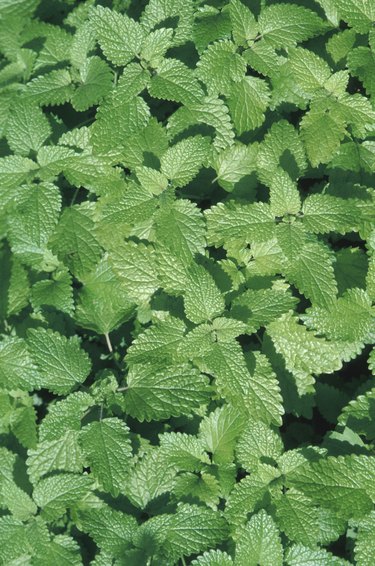Things You'll Need
Composted manure
16-16-8 fertilizer
16-16-16 fertilizer

Mint grows as a hardy perennial in most climate zones. The plants spread profusely during the summer, so it's best to plant them in a sunken pot or confined garden bed. Mint doesn't require a high amount of fertilizer if you plant it in rich, well-drained soil. Too much fertilizer can prevent the plant from producing the oils that make the leaves flavorful. A once yearly application, beginning when you originally plant the mint and reapplied each spring, provides enough nutrients for the mint to remain healthy.
Step 1
Spread 2 inches of composted manure over the planting site before planting new mint plants. Compost provides nutrients and improves the drainage of the bed.
Video of the Day
Step 2
Sprinkle ½ tsp. of a slow-release 16-16-8 fertilizer over each square foot of mint bed before you plant. Turn the fertilizer and compost into the top 6 inches of the bed. Plant the mint after adding the compost and fertilizer.
Step 3
Fertilize existing mint once yearly in spring as the plant begins putting on new growth. Sprinkle 1 tsp. of 16-16-16-blend fertilizer around each plant, but avoid applying the fertilizer directly to the stems or leaves.
Step 4
Irrigate the mint immediately following fertilization. Water dilutes the fertilizer, and so the plants are better able to absorb the nutrients.
Warning
Over-fertilization can result in rust and fungus problems on mint, in addition to diminished flavor.
Video of the Day